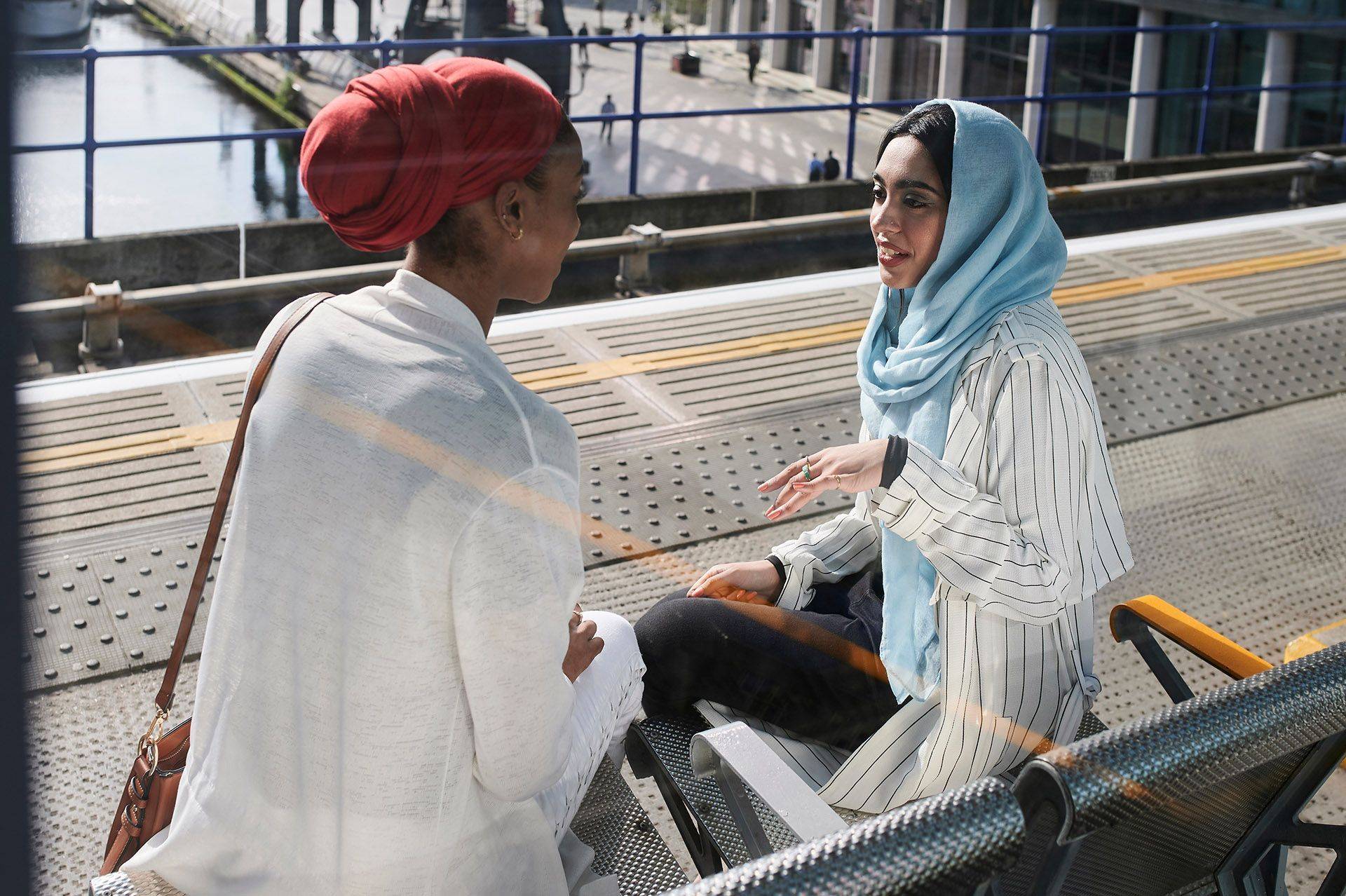
Social impact: building a better case for infrastructure investment
Infrastructure’s role in encouraging economic growth is well documented, but when it comes to making the case for infrastructure, social and environmental benefits should not be a secondary consideration.
To create infrastructure that is not only best in the world but best for the world, President Lara Poloni argues that social impact should be a key driver for investment, in addition to the traditional measures of economic return and job growth.
In the American city of Atlanta, an abandoned railroad track turned pedestrian path is connecting communities and erasing a redline that once separated them.
In the United Kingdom, a new crosstown rail line is not only expected to improve the commute into London, it may also help some residents live longer by connecting poorer parts of the city with the economic opportunities in the center.
In China, restoring a river running through the center of Nantong is enhancing the sustainability of this industrial port city and improving the wellbeing of the local population.
What connects these projects? Each one delivers social dividends and addresses pressing challenges that extend value beyond the more traditional economic benchmarks guiding most infrastructure investment today.
Measuring success
Infrastructure’s value as a driver of economic growth is a tried and tested measure of success. Potential economic returns are almost always cited in building the case for investment. Indeed, governments looking to boost economies often turn to infrastructure precisely for its strengths as an economic multiplier.
In making the case for infrastructure, social benefits tend to fit the ‘nice to have’ category. In part, this is because they are harder to measure – making success harder to claim. But when it comes to extending value for communities, social returns such as protecting public health, improving access, boosting quality of life, and enhancing wellbeing are essential.
The challenge will always be in measuring success: how do you assess the true benefit of a project on people’s lives over time, in driving wellbeing, or in generating meaningful social change?
Quantifying social impact
In the future, what’s needed is a greater focus on developing standardized, accepted measurement tools to better quantify direct and indirect social impacts. Environmental rating systems provide an organized framework and standardized metrics for measuring performance. If a similar system were developed for social impact, it would offer insight into, extend advocacy for and showcase projects that are not just best in the world, but best for the world.
In the BeltLine project in Atlanta, Georgia, 22 miles of abandoned railway tracks circling the city’s urban core are giving way to a biking and pedestrian loop as part of a revitalization plan that will connect 45 neighborhoods, add jobs, affordable housing and 2,000 acres of new and upgraded parks.
AECOM provided engineering and design services for this highly touted 25-year urban landscaping project that embraces principles aligned with triple-bottom line reporting, an accounting framework that focuses on social and environmental concerns as much as profits. Established in the early 1990s, and the concept has given rise to other measurement frameworks, including social return on investment (SRoI) and sustainability goals.
Beyond generating $5 billion in new commercial and residential development through its first decade, project backers see the BeltLine’s continuing potential in not just spurring redevelopment, but in easing divisions of class and race, supporting small businesses, promoting healthier living for residents and improving access.
In the UK, the Social Value Portal is bringing additional rigor and consistency to the task of evaluating different strands of social impact using financial and non-financial information and drawing in the public- and private-sectors, third parties and even competing professional services companies. Work to assess the whole-life value of buildings and infrastructure, not just whole-life costs, plays to sustainability standards set by many governments, especially in Europe and Asia-Pacific.
What’s clear is that helping clients land on the right measurement systems requires transparency, data, a holistic view and patience. Creating a common way of talking about and reporting social value can be a driver of change, while encouraging collaboration, authenticity and openness.
You should be looking at social value in a lifecycle sense. We’re on a journey and looking at social value in an integrated holistic way is relatively new … If you think about the long game and how you’re building capacity, enabling organizations to stand on their own feet and draw down on the resources that they need to make that happen, you’re going to be in a great place.
In London, the Crossrail project is expected to generate a £42 billion benefit to the UK economy when it’s completed. In addition to this headline figure, the benefits commonly touted include offering 1.5 million additional people access to central London within 45 minutes.
But improving rail service doesn’t just mean saving commuting time. A University College London research project suggests it can also improve life expectancy through greater access to services and opportunity. The 2012 study determined that life expectancy for a man in Westminster, one of the most affluent sections of London, was 77.7 years. However, board the Underground in Westminster and travel east seven miles (6 stops) and you find yourself in Canning Town. Life expectancy for a man there? 71.6 years.
Can you put an economic value on seven years of someone’s life? Of course not. Those who attempt to do so have been equating value with monetary worth. With a proper way of measuring social impact, this confusion would be less likely to arise.
In China, the Nantong Eco-Corridor project began with the need to rehabilitate the wetland ecosystem of the Yangtze River delta region, disrupted after many years of rapid industrialization. Our infrastructure-oriented approach resulted in improved soil quality that protects native vegetation, but by doing so we created social benefits too. Recreation activities reconnected residents with nature and promoted a healthier lifestyle for visitors and locals, and better integrated homes and workspaces supported sustainable growth.
When this project is judged in the future, we believe it is these social impacts that will stand the test of time.
Driving change
The move to consider social value has been building for some time due to a variety of factors. Moved to action by climate change worries, the public has been applying greater pressure on corporations and governments to do right by society in their investment decision-making. Companies are finding that a strong sustainability proposition can drive value and safeguard long-term success. And governments – mindful of the inextricable link between physical infrastructure and public benefits – are also setting terms during the procurement process that require greater social value considerations, like developing new skills in local populations.
In the wake of tragic and massive fires and hurricanes around the world, cities have been increasing investment in the resilience of physical systems, a proper assessment of which covers social as well as environmental pressures. Dealing with coronavirus tested some of those systems to the maximum and amplified existing social challenges. Those with the least secure jobs and tenure were hit hardest and found it most difficult to bounce back.
A common language
In the long term, our industry can play an advocacy role in advancing a universally accepted measurement scheme useful for government, the private sector and investors alike, and by focusing attention on projects and innovative approaches that incorporate social impact thinking – from the design and planning stages, to delivery and throughout the project life-cycle.
This process should start now: creating a common way of talking about and reporting social impact can be a driver of change.
